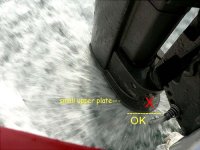Craigponder
Cadet
- Joined
- Dec 1, 2021
- Messages
- 18
Currently have an older Duraboat 14 and cant read the plate on the boat as to whether its a L for long or S for short transom. The transom measures 16". My 1960 Evinrude Fastwin 18 hp, measures 18" to the cavitation plate. It works well on this boat.
I'm thinking of getting a new Tohatsu 20hp and they come in 15" and 20" lengths. Seems I'm at a loss as to what to think. Here is from their website and still I cant hone in on what would be correct. Any comments would be great. So basically I have an existing boat with a 16" transom and wonder which new Tohatsu would be correct, the 15" or 20"?
" If you are trying to match a motor you already own to a new boat your choice is determined by the distance from the mounting surface of the motor to the anti ventilation plate on your motor. The distance will be approximately 15 inches (short) or 20 inches (long). select a motor to match. If your motor is between those dimensions but definitely less than 20 talk to your dealer. Most likely you will get a short. It takes at least a 20 inch motor shaft to perform well on a long transom boat."
I'm thinking of getting a new Tohatsu 20hp and they come in 15" and 20" lengths. Seems I'm at a loss as to what to think. Here is from their website and still I cant hone in on what would be correct. Any comments would be great. So basically I have an existing boat with a 16" transom and wonder which new Tohatsu would be correct, the 15" or 20"?
" If you are trying to match a motor you already own to a new boat your choice is determined by the distance from the mounting surface of the motor to the anti ventilation plate on your motor. The distance will be approximately 15 inches (short) or 20 inches (long). select a motor to match. If your motor is between those dimensions but definitely less than 20 talk to your dealer. Most likely you will get a short. It takes at least a 20 inch motor shaft to perform well on a long transom boat."





















